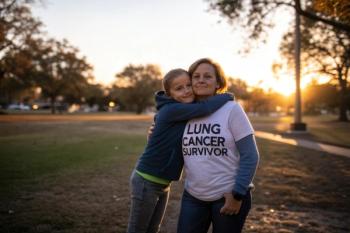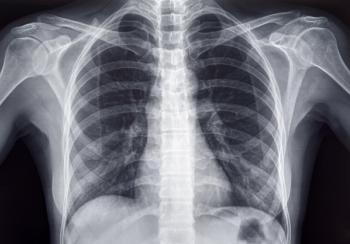
Lung Cancer Patients Among Those Facing Steep Out-of-Pocket Costs After Diagnosis, Study Finds
Privately insured lung cancer patients under age 65 face a sharp rise in out-of-pocket costs after diagnosis, according to a new study published July 21 in
Financial toxicity, which occurs when the costs of care significantly disrupt a person’s quality of life or access to treatment, affects
Although much is known about these challenges among older adults with Medicare, far less is understood about the financial impact on younger patients with private insurance. This study, led by
The retrospective cohort study linked private insurance claims from a large national insurer with data from the Surveillance, Epidemiology, and End Results (SEER) cancer registry. The study included more than 46,000 privately insured individuals, of whom 19,656 had cancer and 26,502 served as controls. Researchers analyzed medical claims between 2008 and 2022 for patients ages 18 to 64, applying a difference-in-differences approach to isolate the impact of a cancer diagnosis on out-of-pocket spending.
For those unfamiliar,
The analysis found that patients with cancer incurred an average increase of $592.53 per month in out-of-pocket costs, defined as copays, coinsurance, and deductibles. These costs remained elevated for at least six months after diagnosis. The financial burden was most pronounced among patients diagnosed with more advanced disease.
The average age at diagnosis in the study cohort was 46. Most patients were insured through employer-sponsored health plans and did not qualify for Medicare coverage.
Of the 19,656 patients with cancer included in the study, 2,233 had lung cancer. While the analysis did not report out-of-pocket costs separately by cancer type, lung cancer is frequently diagnosed at a later stage, which may contribute to greater financial burden. In the full cohort, stage 4 disease was associated with the highest average increase in out-of-pocket costs at $719.97 per month. Individuals with early-stage cancer faced an average increase of $462.01 per month.
“Our findings provide quantitative evidence that even with private insurance, out-of-pocket costs were higher in the month of diagnosis and in the months after diagnoses compared with costs for a control group,” wrote Rose and his co-authors in the discussion section of their paper.
While much of the existing research on cancer-related financial burden has focused on Medicare beneficiaries, this study sheds light on the experiences of younger adults, whose insurance is often tied to employment and varies widely in coverage and cost-sharing. The authors pointed to a clear link between later-stage disease and higher out-of-pocket costs, which they attributed to the “more intensive workup and treatment” typically required for advanced cancer.
The authors noted several limitations, including the risk of bias from patients losing insurance coverage after diagnosis, especially those with stage 4 cancer. Although they used sensitivity analyses to address this, the reasons for coverage loss, such as job changes or serious illness, were not available in the data. The study also focused only on direct medical out-of-pocket costs and did not include other expenses like travel or lost wages.
“The variability in out-of-pocket costs based on cancer stage underscores the need for policies, such as paid sick leave, that address both insurance continuity and financial assistance, especially for patients with more advanced cancer,” concluded Rose and his colleagues.
Newsletter
Get the latest industry news, event updates, and more from Managed healthcare Executive.


















































